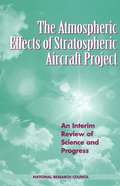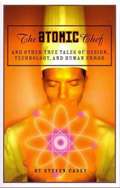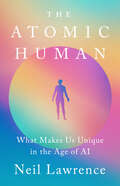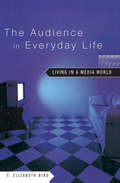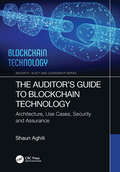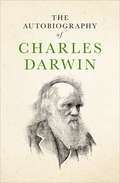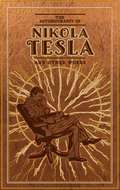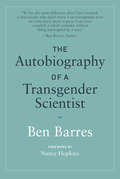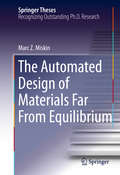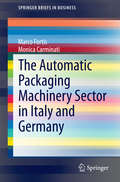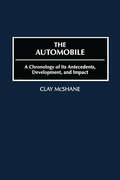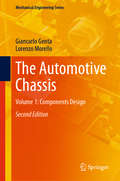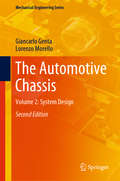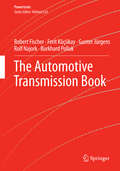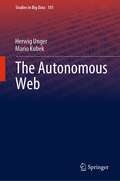- Table View
- List View
The Atlas of Abandoned Places
by Oliver SmithThe globe is littered with forgotten monuments, their beauty matched only by the secrets of their past.A glorious palace lies abandoned by a fallen dictator. A grand monument to communism sits forgotten atop a mountain. Two never-launched space shuttles slowly crumble, left to rot in the middle of the desert. Explore these and many more of the world's lost wonders in this atlas like no other.With remarkable stories, bespoke maps and stunning photography of fifty forsaken sites, The Atlas of Abandoned Places travels the world beneath the surface; the sites with stories to tell, the ones you won't find in any guidebook.Award-winning travel writer Oliver Smith is your guide on a long-lost path, shining a light on the places that the world forgot.Locations featured in the book include:Europe: Maunsell Forts, Aldwych Station, Paris Catacombs, La Petite Ceinture, Craco, Teufelsberg, Beelitz-Heilstätten, Red Star Train Graveyard, Pyramiden, Salpa Line, Buzludzha Monument, Pripyat, Wolf's Lair, Project Riese, Sarajevo Bobsleigh Track, Albanian Bunkers, Rummu QuarryThe Americas & the Carribean: New Bedford Orpheum Theatre, City Hall Station, Bodie, The Boneyards of Western USA, Bannerman Castle, Palace of Sans Souci, Montserrat Exclusion Zone, Ciudad Perdida, Humberstone and Santa Laura, Uyuni Train Cemetery, FordlândiaThe Middle East & the Caucasus: Kayaköy, Burj Al Babas, Varosha, Tskaltubo, Palaces of SaddamAsia: Ryugyong Hotel, Buran at Baikonur, Mo'ynoq Ship Graveyard, Aniva Lighthouse, Hô' Thuy Tiên Waterpark, Fukushima Red Zone, HashimaOceania: Wittenoom, Wrecks of Homebush Bay, Port Arthur, MS World Discoverer, Second World Remains of Papua New GuineaAfrica: Shipwrecks of the Skeleton Coast, Kolmanskop, Mobutu's Gbadolite, Mos Espa, São Martinho dos Tigres
The Atlas of Abandoned Places
by Oliver SmithThe globe is littered with forgotten monuments, their beauty matched only by the secrets of their past.A glorious palace lies abandoned by a fallen dictator. A grand monument to communism sits forgotten atop a mountain. Two never-launched space shuttles slowly crumble, left to rot in the middle of the desert. Explore these and many more of the world's lost wonders in this atlas like no other.With remarkable stories, bespoke maps and stunning photography of fifty forsaken sites, The Atlas of Abandoned Places travels the world beneath the surface; the sites with stories to tell, the ones you won't find in any guidebook.Award-winning travel writer Oliver Smith is your guide on a long-lost path, shining a light on the places that the world forgot.Locations featured in the book include:Europe: Maunsell Forts, Aldwych Station, Paris Catacombs, La Petite Ceinture, Craco, Teufelsberg, Beelitz-Heilstätten, Red Star Train Graveyard, Pyramiden, Salpa Line, Buzludzha Monument, Pripyat, Wolf's Lair, Project Riese, Sarajevo Bobsleigh Track, Albanian Bunkers, Rummu QuarryThe Americas & the Carribean: New Bedford Orpheum Theatre, City Hall Station, Bodie, The Boneyards of Western USA, Bannerman Castle, Palace of Sans Souci, Montserrat Exclusion Zone, Ciudad Perdida, Humberstone and Santa Laura, Uyuni Train Cemetery, FordlândiaThe Middle East & the Caucasus: Kayaköy, Burj Al Babas, Varosha, Tskaltubo, Palaces of SaddamAsia: Ryugyong Hotel, Buran at Baikonur, Mo'ynoq Ship Graveyard, Aniva Lighthouse, Hô' Thuy Tiên Waterpark, Fukushima Red Zone, HashimaOceania: Wittenoom, Wrecks of Homebush Bay, Port Arthur, MS World Discoverer, Second World Remains of Papua New GuineaAfrica: Shipwrecks of the Skeleton Coast, Kolmanskop, Mobutu's Gbadolite, Mos Espa, São Martinho dos Tigres
The Atlas of American Artisan Cheese
by Jeffrey P. Roberts"The Atlas of American Artisan Cheese" is the first reference book of its kind and a must-have for every foodie's library. Jeffrey P. Roberts lavishes loving attention on the growing local food and farmstead movement in what is fast becoming a national trend. This fully illustrated atlas of contemporary artisan cheeses and cheese makers will not only be a mainstay in any cookery and cuisine library-guiding consumers, retailers, restaurateurs, and food professionals to the full breadth and unparalleled quality of American artisan foods-it will be the source of many a fabulous food adventure. Organized by region and state, "The Atlas of American Artisan Cheese" highlights more than 350 of the best small-scale cheese makers in the United States today. It provides the most complete overview of what's to be had nationwide-shippable, attainable, delectable. Each entry describes a cheesemaker; its cheese; whether from cow, sheep, or goat milk; availability; location; and even details on cheese-making processes. "The Atlas" captures America's local genius for artisan cheese: a capacity for adaptation, experimentation, and innovation, while following old-world artisanship. It is destined to become a classic resource and reference.
The Atmospheric Effects of Stratospheric Aircraft Project: An Interim Review of Science and Progress
by Panel on Atmospheric Effects of AviationA report on The Atmospheric Effects of Stratospheric Aircraft Project
The Atomic Chef: and Other True Tales of Design, Technology, and Human Error
by Steven M. CaseyThe Atomic Chef is an altogether new collection of 20 true stories about technology and design-induced human error by the author of the highly acclaimed original, Set Phasers on Stun. The 20 stand-alone chapters of this new work describe how technological failures result from the incompatibilities between the way things are designed and the way people actually perceive, think, and act. New technologies will succeed or fail based on our ability to minimize these incompatibilities between the characteristics of people and the characteristics of the things we create and use. This book is the quite essential must read for all those who deal with technology in any fashion. From the frustration of an awkward ATM machine to the threat of accidental, nuclear Armageddon, Casey shows how the same crucial factors come into play told through the very eyes of those people who saw and experienced these things. No student of design, psychology, behavioral science, or technology should be without this book, and neither should any intelligent member of society who wants to know what goes on with the successes and failures of modern technology. Sit ringside to the action where compelling events unfold. The stories in this book will take you to airports and airline cabins, an amusement park, a fertility clinic, a pharmaceutical plant, an emergency dispatch center, the Olympic games, and a bank; to hospitals, spacecraft, ships, and cars. From the coasts of Peru and Monterey, in orbit aboard the International Space Station, the freeways of Southern California and the back roads of France, the battlefields of Afghanistan, and a nuclear fuel plant in Japan. This is The Atomic Chef.
The Atomic Human: What Makes Us Unique in the Age of AI
by Neil D. LawrenceFrom a renowned computer scientist, this book seeks the distinctive human quality that will prevail against artificial intelligence. If artificial intelligence takes over decision-making what, then, is unique and irreplaceable about human intelligence? The Atomic Human is a journey of discovery to the core of what it is to be human, in search of the qualities that cannot be replaced by the machine. Neil Lawrence brings a timely, fresh perspective to this new era, recounting his personal journey to understand the riddle of intelligence. By contrasting our own intelligence with the capabilities of machine intelligence through history, The Atomic Human reveals the technical origins, capabilities, and limitations of AI systems, and how they should be wielded–not just by the experts, but ordinary people.
The Audience in Everyday Life: Living in a Media World
by S. Elizabeth BirdThe Audience in Everyday Life argues that a media audience cannot be studied in front of the television alone--their interaction with media does not simply end when the set is turned off. Instead, we must study the daily lives of audiences to find the undercurrents of media influence in everyday life. Bird provides a host of useful tools and methods for scholars and students interested in the ways media is consumed in everyday life.
The Audio Circuits Cookbook: Building Blocks and Tools to Design Professional Audio Devices
by Ethan WinerThe Audio Circuits Cookbook is a comprehensive collection of high-quality audio circuit modules—“building blocks” —that readers can arrange to create complete audio devices. More than 80 featured circuits cover every aspect of audio, from basics such as active rectifiers, peak followers, and oscillators, to complete professional quality devices including compressors, equalizers, preamps, and an analog synthesizer.Offering a range of tutorial advice that covers capacitor selection, multi-layer PC board design, and more, each circuit in this book is also provided as an LTspice file, ready to be copied into your projects. It includes detailed explanations of every type of active filter commonly used for audio, along with a spreadsheet that calculates their component values, as well as Ohm’s Law and Decibels spreadsheets.Providing practical explanations of both simple and sophisticated audio circuits using minimal math and theory, this is an ideal manual for intermediate audio professionals, hobbyists, and students coming to audio electronics from non-engineering backgrounds. Professional engineers will find much of value as well in the complete and tested circuits.
The Audio Expert: Everything You Need to Know About Audio
by Ethan WinerThe Audio Expert is a comprehensive reference book covering all aspects of audio, with both practical and theoretical explanations. It is written for people who want to understand audio at the deepest, most technical level, but without needing an engineering degree. The Audio Expert explains how audio really works in much more depth than usual, using common sense plain-English explanations and mechanical analogies, with minimal math. It uses an easy to read conversational tone, and includes more than 400 figures and photos to augment the printed text. However, this book goes beyond merely explaining how audio works. It brings together the concepts of audio, aural perception, musical instrument physics, acoustics, and basic electronics, showing how they’re intimately related. It also describes in great detail many practices and techniques used by recording and mixing engineers, including video production and computers. This book is meant for intermediate to advanced recording engineers and audiophiles who want to become experts. There’s plenty for beginners too. One unique feature is explaining how audio devices such as equalizers, compressors, and A/D converters work internally, and how they’re spec’d and tested, rather than merely describing how to use them. There’s plenty of myth-busting and consumerism too. The book doesn’t tell readers what brand power amplifier to buy, but it explains in great detail what defines a good amplifier so people can choose a first-rate model wisely without over-paying. Most explanations throughout the book are platform-agnostic, applying equally to Windows and Mac computers, and to most software and hardware. Many audio and video examples are included to enhance the written text. The new edition offers many updates and improvements throughout. New sections on coding an equalizer, comparing microphone preamps, testing results of loudspeaker isolation devices, new online video content on music theory, plus incorporated chapters on MIDI basics, computers, video production, plus new myth-busters, and much more!
The Auditor’s Guide to Blockchain Technology: Architecture, Use Cases, Security and Assurance (Security, Audit and Leadership Series)
by Shaun AghiliThe 21st century has been host to a number of information systems technologies in the areas of science, automotive, aviation and supply chain, among others. But perhaps one of its most disruptive is blockchain technology whose origin dates to only 2008, when an individual (or perhaps a group of individuals) using the pseudonym Satoshi Nakamoto published a white paper entitled Bitcoin: A peer-to-peer electronic cash system in an attempt to address the threat of “double- spending” in digital currency. Today, many top-notch global organizations are already using or planning to use blockchain technology as a secure, robust and cutting-edge technology to better serve customers. The list includes such well-known corporate entities as JP Morgan, Royal Bank of Canada, Bank of America, IBM and Walmart. The tamper-proof attributes of blockchain, leading to immutable sets of transaction records, represent a higher quality of evidence for internal and external auditors. Blockchain technology will impact the performance of the audit engagement due to its attributes, as the technology can seamlessly complement traditional auditing techniques. Furthermore, various fraud schemes related to financial reporting, such as the recording of fictitious revenues, could be avoided or at least greatly mitigated. Frauds related to missing, duplicated and identical invoices can also be greatly curtailed. As a result, the advent of blockchain will enable auditors to reduce substantive testing as inherent and control audit risks will be reduced thereby greatly improving an audit’s detection risk. As such, the continuing use and popularity of blockchain will mean that auditors and information systems security professionals will need to deepen their knowledge of this disruptive technology. If you are looking for a comprehensive study and reference source on blockchain technology, look no further than The Auditor’s Guide to Blockchain Technology: Architecture, Use Cases, Security and Assurance. This title is a must read for all security and assurance professionals and students looking to become more proficient at auditing this new and disruptive technology.
The Augmented Spherical Wave Method
by Volker EyertThe Augmented Spherical Wave (ASW) method is one of the most powerful approaches to handle the requirements of finite basis sets in DFT calculations. It is particularly suited for the calculation of the electronic, magnetic, and optical properties of solid-state materials. Recent developments allow application, in addition, to the elastic properties and phonon spectra. Due to the localized nature of the ASW basis set these properties can be easily interpreted in terms of atomic-like orbitals. The book addresses all those who want to learn about methods for electronic structure calculations and the ASW method in particular. This new edition has been thoroughly revised and extended. In particular, a chapter on the new, both very efficient and accurate spherical-wave based full potential ASW method has been added.
The Autobiography of Charles Darwin: Super Large Print Edition Of The Classic Memoir For Low Vision Readers (Barnes And Noble Library Of Essential Reading Series)
by Charles DarwinThis edition of Darwin&’s life story restores previously censored passages on religion and the scientist&’s opinions of his contemporaries. Darwin wrote his autobiography in 1876, at the age of sixty-seven, hoping it would prove interesting to his children and grandchildren. Preparing the book for a wider audience, his family initially sought to protect his legacy by removing passages they found too personal or controversial. This restored edition, which appeared one hundred years after the publication of On the Origin of Species, was edited by Darwin&’s own granddaughter Nora Barlow, who wished to share the text as it originally existed in her family&’s archives. Shedding light on the women in Darwin&’s life and his evolving views on religion, The Autobiography of Charles Darwin delves deep into his brilliant yet shy and reclusive personality, from his childhood love of nature to the reception of his groundbreaking theories on evolution. It also includes previously unpublished notes and letters on family matters, as well as Darwin&’s dispute with Samuel Butler.
The Autobiography of Light
by George GrammatikakisThis book brings to life one of the most fundamental entities in the universe: the electromagnetic waves that we perceive as light. With his gift for narrative, the author explains the nature of light and the long history of its influence on human ideas, technology and culture. From early efforts to understand vision and colours, through relativity and quantum theory, visual art and laser technology to the birth of stars and attempts to photograph their end, readers will come to appreciate the central role of light not only in human history, but also in the history of the cosmos. This grand tour ends in a flourish, with an epilogue written in the first person by the protagonist itself: a true Autobiography of Light. All chapters in the book are relatively self-contained, allowing readers to dip freely in and out. What makes this captivating story so original is the effort made to point out the affinity between the study of light and achievements in the realm of culture.
The Autobiography of Nikola Tesla and Other Works (Leather-bound Classics)
by Thomas Commerford Martin Nikola TeslaWho was Nikola Tesla? Find out in this comprehensive volume that includes Tesla&’s autobiography and scientific writings, as well as other works that examine his life and career in detail.Nikola Tesla came from a humble upbringing in what is now Croatia and reached the heights of science and technology in the United States at the turn of the twentieth century. The Autobiography of Nikola Tesla and Other Works gives readers a compelling insight into the man whose ideas revolutionized the fields of electrical and mechanical engineering, and who continues to be a source of inspiration for modern inventors. This volume includes Tesla&’s autobiography My Inventions (1919), articles and diagrams that he published in scientific magazines—including &“The Problem of Increasing Human Energy,&” in which he discusses the potential of solar power—and Thomas Commerford Martin&’s The Inventions, Researches, and Writings of Nikola Tesla. A scholarly introduction examines Tesla&’s life and career, and the impact that he has had on generations of inventors up to the present day.
The Autobiography of a Transgender Scientist (The\mit Press Ser.)
by Ben BarresA leading scientist describes his life, his gender transition, his scientific work, and his advocacy for gender equality in science.Ben Barres was known for his groundbreaking scientific work and for his groundbreaking advocacy for gender equality in science. In this book, completed shortly before his death from pancreatic cancer in December 2017, Barres (born in 1954) describes a life full of remarkable accomplishments—from his childhood as a precocious math and science whiz to his experiences as a female student at MIT in the 1970s to his female-to-male transition in his forties, to his scientific work and role as teacher and mentor at Stanford. Barres recounts his early life—his interest in science, first manifested as a fascination with the mad scientist in Superman; his academic successes; and his gender confusion. Barres felt even as a very young child that he was assigned the wrong gender. After years of being acutely uncomfortable in his own skin, Barres transitioned from female to male. He reports he felt nothing but relief on becoming his true self. He was proud to be a role model for transgender scientists.As an undergraduate at MIT, Barres experienced discrimination, but it was after transitioning that he realized how differently male and female scientists are treated. He became an advocate for gender equality in science, and later in life responded pointedly to Larry Summers's speculation that women were innately unsuited to be scientists. Privileged white men, Barres writes, “miss the basic point that in the face of negative stereotyping, talented women will not be recognized.” At Stanford, Barres made important discoveries about glia, the most numerous cells in the brain, and he describes some of his work. “The most rewarding part of his job,” however, was mentoring young scientists. That, and his advocacy for women and transgender scientists, ensures his legacy.
The Automated City: Internet of Things and Ubiquitous Artificial Intelligence
by Seng W. Loke Andry RakotonirainyThe book outlines the concept of the Automated City, in the context of smart city research and development. While there have been many other perspectives on the smart city such as the participatory city and the data-centric city, this book focuses on automation for the smart city based on current and emerging technologies such as the Internet of Things, Artificial Intelligence and Robotics. The book attempts to provide a balanced view, outlining the promises and potential of the Automated City as well as the perils and challenges of widespread automation in the city. The book discusses, at some depth, automated vehicles, urban robots and urban drones as emerging technologies that will automate many aspects of city life and operation, drawing on current work and research literature. The book also considers broader perspectives of the future city, in the context of automation in the smart city, including aspirational visions of cities, transportation, new business models, and socio-technological challenges, from urban edge computing, ethics of the Automated City and smart devices, to large scale cooperating autonomous systems in the city.
The Automated Design of Materials Far From Equilibrium
by Marc Z. MiskinThis thesis conceptualizes and implements a new framework for designing materials that are far from equilibrium. Starting with state-of-the-art optimization engines, it describes an automated system that makes use of simulations and 3D printing to find the material that best performs a user-specified goal. Identifying which microscopic features produce a desired macroscopic behavior is a problem at the forefront of materials science. This task is materials design, and within it, new goals and challenges have emerged from tailoring the response of materials far from equilibrium. These materials hold promising properties such as robustness, high strength, and self-healing. Yet without a general theory to predict how these properties emerge, designing and controlling them presents a complex and important problem. As proof of concept, the thesis shows how to design the behavior of granular materials, i. e. , collections of athermal, macroscopic identical objects, by identifying the particle shapes that form the stiffest, softest, densest, loosest, most dissipative and strain-stiffening aggregates. More generally, the thesis shows how these results serve as prototypes for problems at the heart of materials design, and advocates the perspective that machines are the key to turning complex material forms into new material functions.
The Automatic Packaging Machinery Sector in Italy and Germany
by Marco Fortis Monica CarminatiThis book analyzes the wrapping and packaging machinery sector in the Emilia/Bologna district in Italy and compares the most recent trends with those in the industry in Schwäbisch Hall and Waiblingen, Baden-Württemberg, Germany, which represents a direct rival. In a detailed and original study, the authors trace the evolution of manufacturing in Bologna during a period that witnessed extraordinary growth in automatic wrapping and packaging machines, leading the sector to become a central pillar of Italian mechanical engineering. Similarly, the history of the industry in the Emilia district is described, highlighting the factors that led to its success. A comprehensive comparative analysis of the German and Italian sectors is then performed. Export figures and the trade balance for the sector are examined based on Eurostat data, and the significance of the two districts in terms of global trade is identified with reference to UN data. In addition, the number of companies, sales, and the size of the workforces are thoroughly compared. The book will be of interest to economists and others with an interest in the development and importance of the automatic packaging machinery sector.
The Automobile: A Chronology of Its Antecedents, Development and Impact (Routledge Library Editions: The Automobile Industry Ser.)
by Clay McShaneThis comprehensive chronology of the automobile covers its engineering as well as the social, cultural and political impact of the car from the invention of the wheel to the O.J. Simpson car chase. It examines the auto industry, the road and roadside, the car in popular culture, fuel history, the spatial transformation of cities, air pollution, critics of car culture, traffic accidents, the globalization of car culture, and much more. This is a reference guide for students and scholars of transportation history and for anyone with an interest in the development of automobiles. Clay McShane is Professor of History at Northeastern University and a noted authority on transportation history. Among his earlier publications is Down the Asphalt Path: American Cities and the Automobile.
The Automotive Body Manufacturing Systems and Processes
by Mohammed A. OmarA comprehensive and dedicated guide to automotive production lines, The Automotive Body Manufacturing Systems and Processes addresses automotive body processes from the stamping operations through the final assembly activities. To begin, it discusses current metal forming practices, including stamping engineering, die development, and dimensional validation, and new innovations in metal forming, such as folding based forming, super-plastic, and hydro forming technologies. The first section also explains details of automotive spot welding (welding lobes), arc welding, and adhesive bonding, in addition to flexible fixturing systems and welding robotic cells. Guiding readers through each stage in the process of automotive painting, including the calculations needed to compute the number of applicators and paint consumption based on vehicle dimensions and demand, along with the final assembly and automotive mechanical fastening strategies, the book's systematic coverage is unique.The second module of the book focuses on the layout strategies of the automotive production line. A discussion of automotive aggregate planning and master production scheduling ensures that the reader is familiar with operational aspects. The book also reviews the energy emissions and expenditures of automotive production processes and proposes new technical solutions to reduce environmental impact.Provides extensive technical coverage of automotive production processes, discussing flexible stamping, welding and painting lines Gives complete information on automotive production costing as well as the supplier selection process Covers systems from the operational perspective, describing the aggregate and master production planning Details technical aspects of flexible automotive manufacturing lines Methodically discusses the layout and location strategies of automotive manufacturing systems to encompass the structural elements Features topic-related questions with answers on a companion website
The Automotive Chassis: Volume 1: Components Design (Mechanical Engineering Series)
by Giancarlo Genta Lorenzo MorelloThis textbook draws on the authors’ experience gained by teaching courses for engineering students on e.g. vehicle mechanics, vehicle system design, and chassis design; and on their practical experience as engineering designers for vehicle and chassis components at a major automotive company.The book is primarily intended for students of automotive engineering, but also for all technicians and designers working in this field. Other enthusiastic engineers will also find it to be a useful technical guide.The present volume (The Automotive Chassis – Volume 1: Component Design) focuses on automotive chassis components, such as:• the structure, which is usually a ladder framework and supports all the remaining components of the vehicle;• the suspension for the mechanical linkage of the wheels;• the wheels and tires;• the steering system;• the brake system; and• the transmission system, used to apply engine torque to the driving wheels.This thoroughly revised and updated second edition presents recent developments, particularly in brake, steering, suspension and transmission subsystems. Special emphasis is given to modern control systems and control strategies.
The Automotive Chassis: Volume 2: System Design (Mechanical Engineering Series)
by Giancarlo Genta Lorenzo MorelloThis textbook draws on the authors’ experience gained by teaching courses for engineering students on e.g. vehicle mechanics, vehicle system design, and chassis design; and on their practical experience as engineering designers for vehicle and chassis components at a major automotive company. The book is primarily intended for students of automotive engineering, but also for all technicians and designers working in this field. Other enthusiastic engineers will also find it to be a useful technical guide.The present volume (The Automotive Chassis – Volume 2: System Design) focuses on the automotive chassis as a system, providing readers with the knowledge needed to integrate the individual components described in Volume 1 in a complex system that satisfies customers’ expectations. Special emphasis is given to factors influencing system performance, including: - the influence of the powertrain on vehicle performance. Conventional, hybrid and electric powertrains are considered; - factors influencing vehicles’ handling performance; - factors influencing vehicles’ comfort performance; and - factors influencing vehicles’ stability and strategies for accident avoidance (active safety).In addition, this second volume thoroughly covers topics that are usually neglected in other books about the automotive chassis, such as: - the basics of vehicle aerodynamics; - internal combustion engines, electric motors and batteries; and - mathematical modeling tools.This thoroughly revised second edition has been updated to reflect the latest advances in electric and hybrid vehicles, electronic control systems and autonomous driving.
The Automotive Transmission Book
by Robert Fischer Ferit Küçükay Gunter Jürgens Burkhard Pollak Rolf NajorkThis book presents essential information on systems and interactions in automotive transmission technology and outlines the methodologies used to analyze and develop transmission concepts and designs. Functions of and interactions between components and subassemblies of transmissions are introduced, providing a basis for designing transmission systems and for determining their potentials and properties in vehicle-specific applications: passenger cars, trucks, buses, tractors and motorcycles. With these fundamentals the presentation provides universal resources for both state-of-the-art and future transmission technologies, including systems for electric and hybrid electric vehicles.
The Autonomous Web (Studies in Big Data #101)
by Herwig Unger Mario KubekThis book initiates a transformation of the Web into a self-managing, autonomous information system to challenge today’s all-embracing role of big search engines as centralized information managers. In the last decades, the World Wide Web became the biggest source for all kinds of information needed. After a short review of the state of the art, a Web-based system is presented for the first time, which employs all its instances equally to provide, consume, and process information uniformly and consistently. In order to build such an efficient, decentralized, and fully integrated information space with all its needed functionalities, a set of diverse algorithms is introduced. These novel mechanisms for load balancing, routing, clustering, document classification, but also time-dependent information management pertain to almost all system levels. Finally, three different approaches to decentralized Web search are discussed that represent the backbone of the new autonomous Web.


